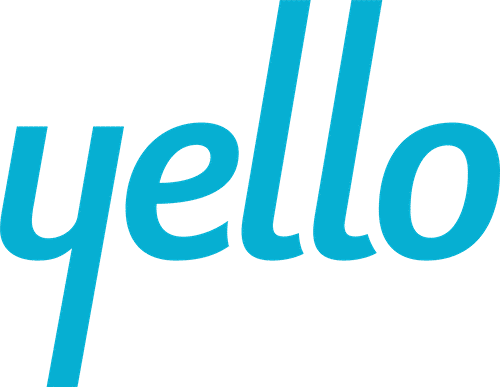Whether you’re ending, beginning or planning for the next intern cycle, the goal of working with young trainees is often the same: eventually making a full-time hire. A practice that started in the medical profession, many businesses have adopted intern programs as a training ground for college students.
Today, most internships are paid – and some are very well paid. A recent survey of internships show that tech workers can earn up to $8,000 per month, and finance workers can make over $5,550. With that kind of up-front investment, it’s important to convert as many interns into permanent hires as possible.
It’s not always easy to know how many interns will prove valuable and choose to stay with your organization. (In fact, it’s something many talent acquisition professionals struggle with!) Even so, there’s data at your fingertips that can help you determine if your intern-to-full-time hiring efforts are paying off (or costing you).
How to calculate intern conversion rate
To understand how well your internal hiring strategy is doing, you need to know what data to examine. It’s important to look at each step in the hiring process to determine intern conversion rates. You’ll want to examine three types of data: the offer rate, acceptance rate, and conversion rate.
Offer rates
If you started with 100 interns and extended a full-time offer to 50, the intern offer rate would be 50% (or 2:1).
Acceptance rates
If, of those 50 offers, 25 accepted, the intern acceptance rate would also be 50% (or 2:1).
Conversion rates
Factored together, for every 100 interns hired, 25 resulted in permanent hire. That means your intern conversion rate would be 25% (or 4:1).
According to the National Association of Colleges and Employers (NACE), the intern conversion rate overall for 2018 was 56.1%. Their data points to a 10% increase from the previous year, and the highest conversion rate since 2016. Their data also shows that signing bonuses for interns average over $2,500.
Forecasting intern conversion rates
Understanding national averages is helpful, but to predict your organization’s intern conversion rate, examining historical data can be critical. Analyze a few years of hiring history to see where your interns have converted to new hires, and where they haven’t:
- Do specific departments have better luck converting interns than others?
- Is there a certain time of year when interns are more likely to accept a full-time role?
- Are students from certain universities more likely to accept a full-time offer?
- Do certain hiring managers have a better track record for converting interns?
- Do signing bonuses affect intern conversion rates?
Look at the overall data, then dig deeper. Conversion rates will likely be lower in high-demand fields, like tech, while repeat interns may show a higher conversion rate. Look for your successes and build on them. Even more importantly, look at where interns are converting at lower rates and find solutions.
If a repeat internship boosts success rates, consider offering your program to more undergrads for a jump start on success. If past patterns emerge, act on them to increase the likelihood of conversions in the future. Your goal is to get the highest possible conversion rates across the board: combing through data can get you there.
Hire employees, not interns
Interns are costly. In addition to financial considerations, the time and effort it takes to train them can be a drain on resources if they don’t stick around long-term. Think long-term and hire interns as if they’re full-time employees. Intern screening and interviewing should be as rigorous as for any permanent hire if your goal is to convert them to staff members.
Hiring managers should look at their own success rates: are they screening as carefully for interns as they would for a permanent hire? If not, refocus on the goal of the program – conversion. Hiring managers who show the most successful conversion rates can be a resource to others.
If conversion rates are low because of market conditions, like the squeeze to hire tech talent, boost success rates by bringing on more interns. If your hiring pool is wider, there will be more opportunities to extend offers at the end of successful internships.
Make it attractive
You and your hiring team know that you’re looking to convert interns into permanent hires eventually. But do candidates know that? Make sure potential hires are aware of your goals.
Throughout the intern posting, screening and interview process, make sure you reinforce that a permanent job is one of the main goals of the internship.
Some candidates will self-eliminate: they know they’re not interested in moving further than the intern program. Others will be even more attracted to your internship, and work harder throughout the process, knowing their success should result in a job offer.
Evaluating interns
If your program is tailored to hire interns permanently, your evaluation process should mirror that need. Look for the hard and soft skills you’d want in a new hire, and think about long-term performance, not short-term growth. Remember hard skills are easier to train than soft. You can develop a worker’s ability to perform tasks, but leadership, communication and intellectual curiosity are harder to find and more difficult to grow.
Retaining interns
According to NACE, over 71% of interns with internal experience stay with the company for at least one year. For many businesses, retention is as challenging as hiring. Creating an attractive career path for interns can help. If you’ve brought them on with the promise of a permanent position, keep them on with the promise of development and growth.
Let new interns (and all new hires) know their career journey is your priority. A recent study showed that 34% of workers who job-hopped in the past year did so to find an opportunity with more career development. As the workplace shifts, professional growth will be a must for employees and businesses alike. A focus on employee growth, from intern to long-term, will drive your organization’s growth as well.
While it’s not an exact science, looking at the data to estimate intern conversion rates will help you predict future hiring needs, identify areas for improvement and optimize the tactics that work best.



